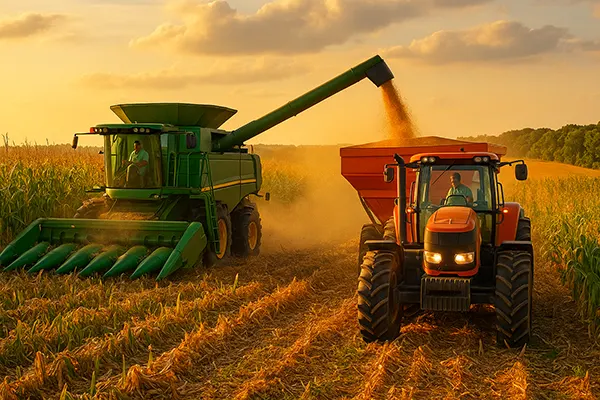
Digital Twin in Agribusiness: How Virtual Models Are Transforming Farming in Europe
Digital twin technology is rapidly gaining traction across European agriculture, enabling farmers to make more informed decisions, optimise resources, and boost sustainability. By creating real-time, data-driven virtual models of physical farming assets, this innovation is reshaping the future of agribusiness. The integration of IoT, AI, and cloud computing into agriculture enables unprecedented visibility and precision in managing crops, livestock, and machinery.
Application of Digital Twins in European Farming
Digital twins allow for the simulation and monitoring of various farm components such as soil health, crop development, irrigation systems, and machinery performance. Farmers in countries like the Netherlands, Germany, and France are leveraging these models to forecast yields, detect plant diseases early, and plan more sustainable practices.
For instance, digital replicas of greenhouses in the Netherlands integrate sensor data to control temperature, humidity, and nutrient levels automatically, resulting in higher yields and reduced waste. In Germany, livestock farms use digital twins to monitor animal welfare through wearable sensors that feed real-time data into virtual simulations.
This technology not only reduces uncertainty but also empowers farmers to take proactive measures, ultimately improving productivity and aligning with the European Green Deal’s sustainability goals.
Integration with Precision Agriculture Tools
Digital twin systems in agribusiness are increasingly tied to precision agriculture tools, such as drones and satellite imagery. These integrations allow for dynamic mapping of fields, real-time analysis of crop stress, and automated responses to environmental conditions.
In Spain and Italy, for example, vineyards are using digital twins combined with satellite imaging to track microclimatic changes affecting grape quality. This granular level of insight enables winemakers to adjust harvesting times and irrigation schedules accordingly.
The synergy between digital twins and precision tools provides a comprehensive feedback loop, where data from the field continuously improves the virtual models, making them more accurate and predictive.
Economic and Environmental Benefits
The financial efficiency that digital twins offer is significant. Farmers can predict the impact of interventions before implementing them, thus avoiding costly mistakes. This is particularly vital as agriculture faces tighter margins and increasing environmental regulations in Europe.
By simulating fertiliser application or irrigation in a digital environment, farmers can test scenarios and choose the most efficient method. This results in lower input costs and reduced environmental impact. For example, in Denmark, digital twin technology helped dairy farms reduce water usage by 30% while maintaining output.
Moreover, digital twins support regenerative agriculture by modelling crop rotations and soil enrichment strategies that maintain long-term productivity and ecosystem health.
Energy Optimisation on Smart Farms
Digital twins can optimise energy consumption across agricultural operations. For example, virtual models of wind turbines or solar installations allow farm owners to monitor performance and predict maintenance needs without interrupting operations.
In Sweden, smart farms are using digital twins to manage renewable energy systems, aligning energy usage with weather patterns and peak demand times. This not only saves money but also supports the broader decarbonisation agenda in rural areas.
By integrating energy management into the digital twin ecosystem, farms can become more self-sufficient, resilient, and environmentally friendly.

Challenges and the Path Ahead
Despite the advantages, there are hurdles to widespread adoption. These include high implementation costs, lack of digital infrastructure in rural areas, and limited technical expertise among farmers. Addressing these challenges requires coordinated policy support, investment in training, and access to affordable technology solutions.
The EU’s Common Agricultural Policy (CAP) for 2023–2027 includes provisions to support digital transformation in agriculture, including funding for digital twin pilots. These initiatives are crucial in narrowing the digital divide and fostering inclusive technological growth.
Additionally, collaboration among agri-tech companies, research institutions, and farming communities is essential to ensure that digital twin solutions are practical, scalable, and tailored to local needs.
Future Outlook for Digital Twins
By 2030, it is expected that over 60% of large-scale farms in Europe will integrate digital twin systems into their operations. These models will become increasingly sophisticated, incorporating machine learning for autonomous decision-making and blockchain for traceability.
As climate change continues to affect agricultural output, digital twins will serve as essential tools for adaptation—enabling scenario planning, disaster response, and sustainable intensification.
Ultimately, the future of farming in Europe lies in data-driven, adaptive, and sustainable systems where digital twins play a central role in maintaining both food security and ecological balance.
